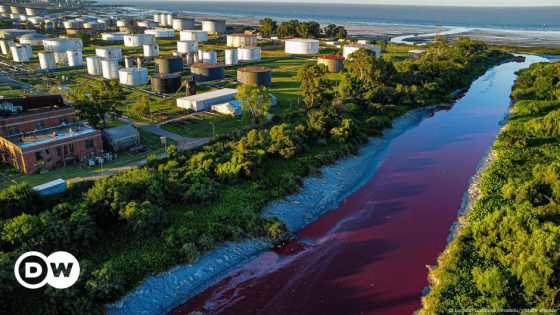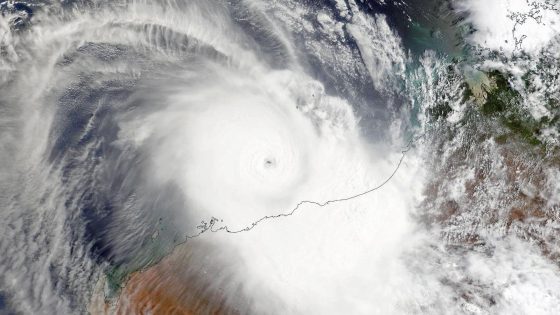Blood-red waters were observed in the Sarandi Stream near Buenos Aires, Argentina, raising environmental concerns on February 7, 2025. Local officials suspect the discoloration may be due to aniline, a toxic chemical used in various industries, including tanneries that line the waterway.
- Blood-red waters reported near Buenos Aires
- Concerns over industrial chemical dumping
- Aniline suspected as toxic substance
- Residents report strong, unpleasant odors
- Ecological reserve located near contaminated area
- Environment Ministry conducting water tests
The Sarandi Stream, which flows into the Plate River, is surrounded by both industrial facilities and residential areas. The alarming color change has prompted fears among residents about potential pollution. Maraa Ducomls, a local resident, described the river’s appearance as resembling “a river of blood,” highlighting the strong odor that has disturbed the community.
Local authorities have taken action by collecting water samples to ascertain the specific substances responsible for the red coloration. The Buenos Aires provincial Environment Ministry indicated that the discoloration could be linked to organic materials, but the exact cause remains under investigation. Past reports from residents suggest that the river has previously shown various colors, including bluish and greenish hues, often accompanied by a greasy film on the surface.
Environmental concerns are heightened due to the presence of tanneries in the area, which are known to discharge harmful chemicals into local waterways. The situation underscores ongoing issues with pollution in the Sarandi River, which has been a point of contention for local residents advocating for better environmental protections. Efforts to monitor and address the pollution will be crucial for the health of both the community and the surrounding ecosystem.
The alarming reports of blood-red waters in the Sarandi Stream highlight significant environmental challenges in urban areas. Ongoing investigations will be vital in addressing the pollution and ensuring the safety of local residents.

































